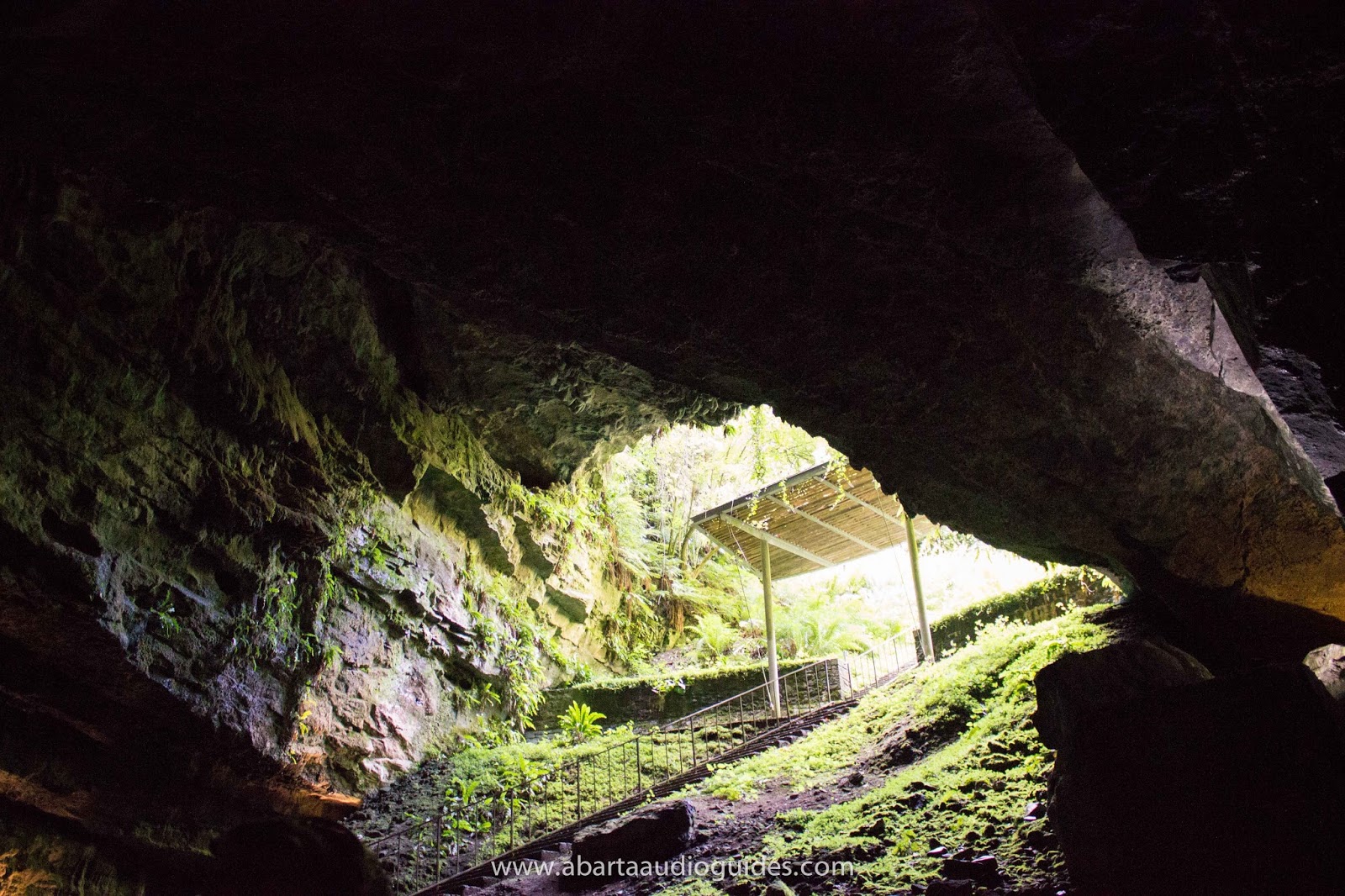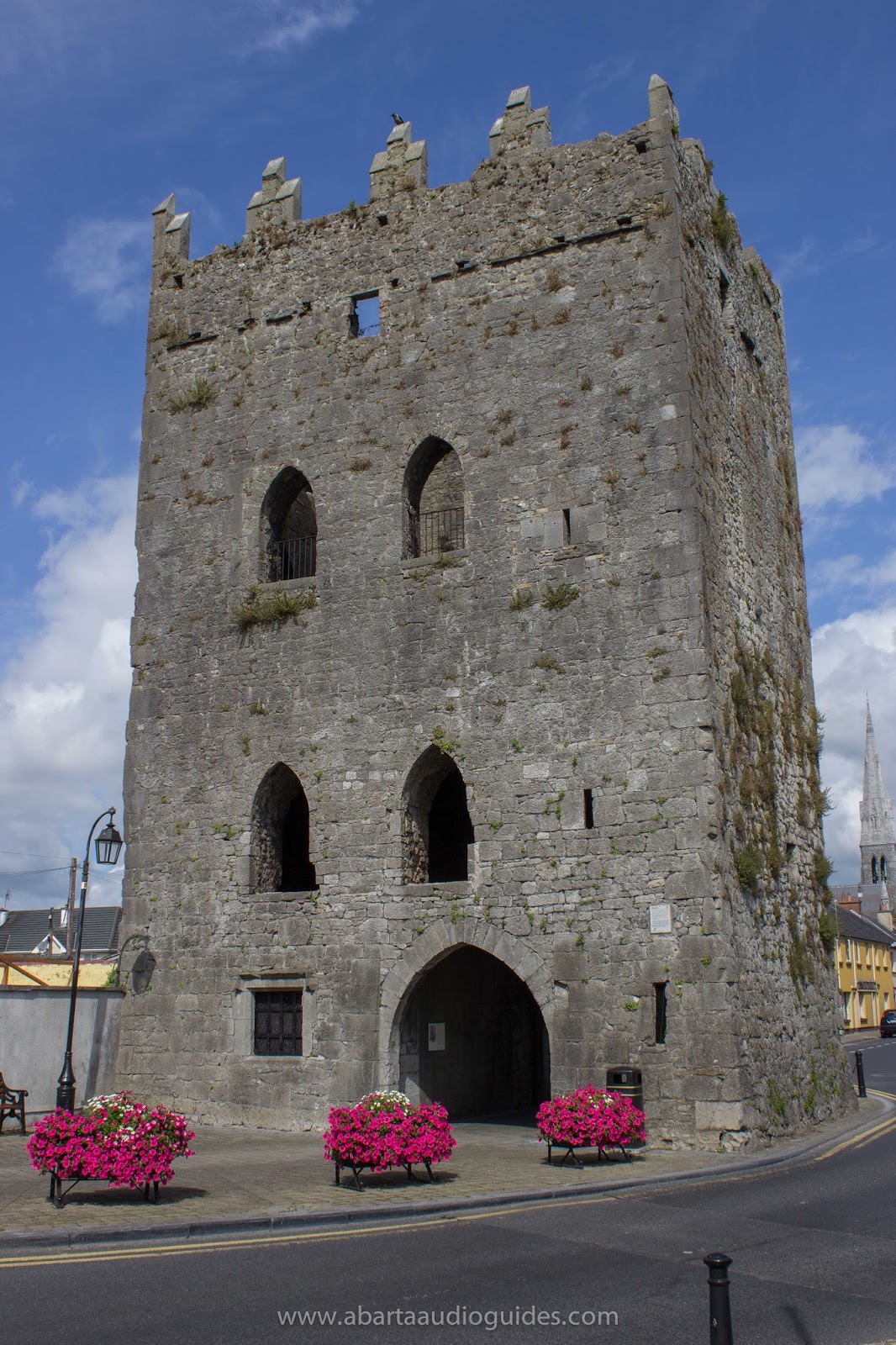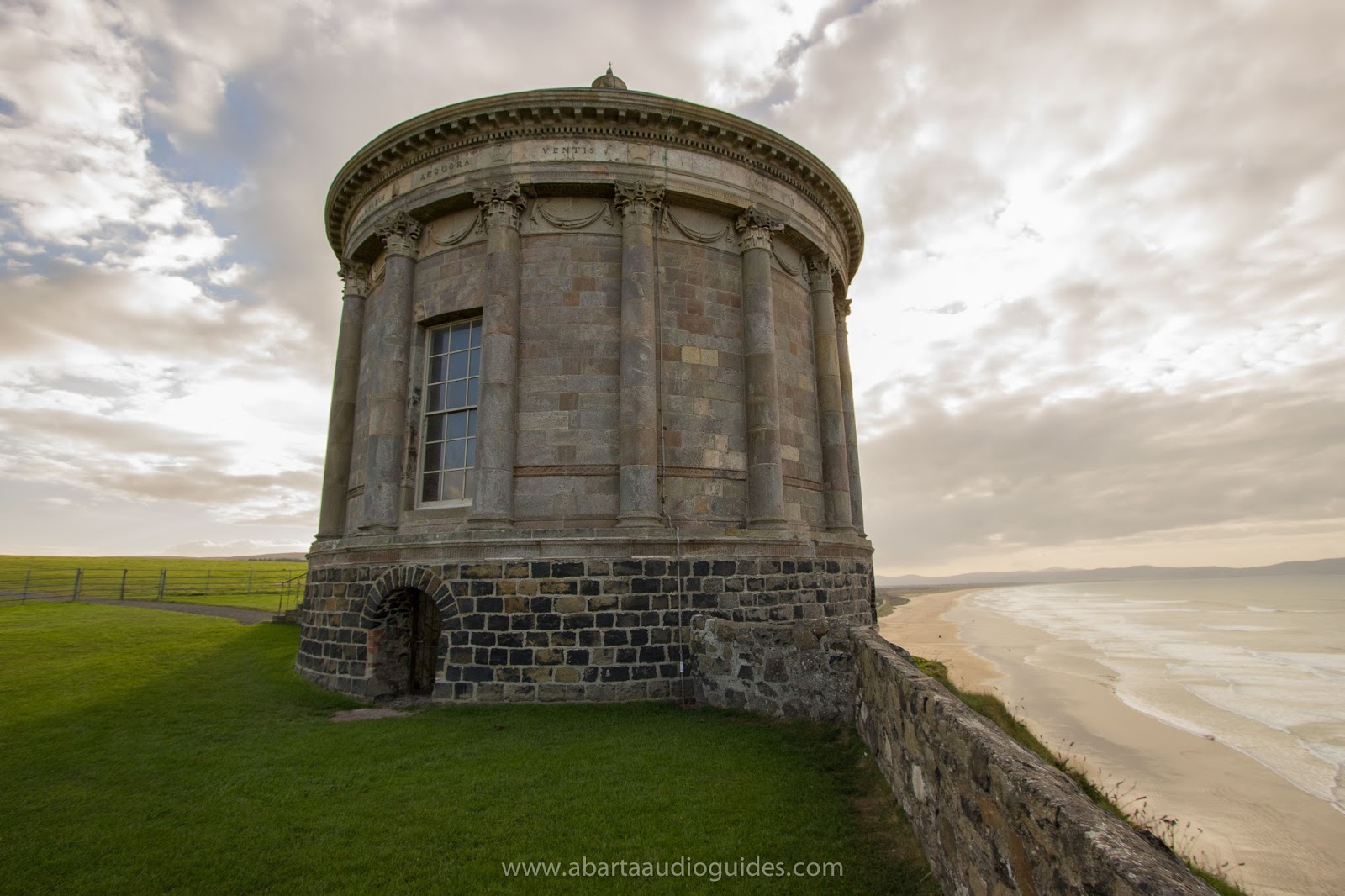![]() |
| If you plan your walk in the evening you'll be rewarded with breathtaking sunsets over the Boyne and medieval buildings |
The town of Trim in County Meath is the site of the largest Norman Castle in Ireland. It was built by the powerful Hugh de Lacy in the late twelfth century. Although Trim Castle is a popular spot, few visitors realise that there is a wonderful River Walk adjacent to the castle that is one of the nicest strolls in Ireland. The route is popular with locals, and every time I’ve taken it I’ve seen a number of joggers, dog-walkers and families enjoying this wonderful amenity.
Before you set off though try and fit in a tour of Trim Castle itself as you will enjoy one of the best guided tours in Ireland (disclaimer, I used to work as a guide here so I’m a little biased). I’ll cover the castle and its history in a separate blogpost, it is undoubtedly one of my favourite heritage sites.
![]() |
| You can enjoy wonderful views of the castle from the vantage point of the River Walk |
When you have finished your tour of the castle, go back to the carpark and cross the small wooden bridge over the Boyne. As you cross the wooden bridge, take a moment to look at the stone bridge that will be on your left. This bridge was constructed some time between 1330 – 1350 and it still carries traffic today, they certainly built to last in medieval Ireland!
![]() |
| The fourteenth century bridge over the Boyne |
![]() |
| The Yellow Steeple |
The tall stone tower opposite the castle is known locally as The Yellow Steeple. It too dates to the fourteenth century (thought to be constructed around 1368–70). It was the bell tower of the Augustinian Abbey of St. Mary’s that once stood opposite the castle. At 40m (131ft) tall, the Yellow Steeple is said to be the tallest medieval building still standing in Ireland. There are little visible remains of the other buildings of St. Mary’s, though Talbot’s Castle, the fine fortified townhouse to the left of the Yellow Steeple, is thought to have incorporated abbey buildings. Talbot’s Castle was built shortly after the Dissolution of the Monasteries in the 1540s. It was said to have been once the home of the famous satirist Jonathan Swift, author of Gulliver’s Travels. He was the vicar of Laracor on the outskirts of Trim in 1670.
![]() |
| Talbot's Castle, once the home of Jonathan Swift |
![]() |
| The Sheep Gate (right of foreground) with Trim Castle in the background |
The stone gate that straddles the path is called the ‘Sheep Gate’. Like the majority of medieval towns, Trim was surrounded by a defensive wall. As well as providing extra fortifications to protect the townspeople at times of conflict, the wall also served as a clear boundary between the town and countryside, where people entering the town could expect to be under different rules and regulations. The gateways served as control points, where tolls and taxes could be easily collected. The low stretch of stone wall running up the slope from the Sheep Gate is the remains of the once strong defensive walls, and the Sheep Gate itself is the only surviving medieval gate into Trim.
![]() |
| The path of The River Walk, winding its way alongside the Boyne |
As you continue along the path following the bank of the river you can find a number of information panels that inform you about life here in the medieval period. After walking for around 15mins you will eventually come to the The Cathedral of Saints Peter and Paul at Newtown. The Cathedral was founded by the Norman Bishop, Simon de Rochfort, in around 1206.
![]() |
| The Nave of the Cathedral catching the last rays of the sun. |
![]() |
| Lovely medieval sculpture of an angel inside the Cathedral of Saints Peter & Paul |
Although only parts of the nave and chancel survive today, it is easy to get the impression of just how massive this cathedral would have been. You can still see many of the fine decorative flourishes in the stonework, and it has lovely lancet windows. The piscina where the priest used to wash the holy vessels during the mass is also still well preserved.
![]() |
| The 'Tomb of the Jealous Man' at Newtown Trim |
Just beyond the Cathedral remains you can find a small parish church that probably dates to the later fifteenth century. This site is famous for the remarkable 16th Century tomb of Sir Lucas Dillon and his wife, Lady Jayne Bathe. The two stone effigies on the tomb are separated by a sword of state. The tomb is known locally as 'The Tomb of the Jealous Man and Woman', it is believed that instead of signifying the sword of state, the sword actually represents Sir Lucas' displeasure at his wife for having an affair, forever separating the two. It is believed that the tomb possesses a cure for warts and skin complaints. Rub your wart on a pin and leave the pin on top of the tomb, as the pin rusts the wart withers and falls off. I cannot speak personally for whether this works, but I did notice a large number of pins on the tomb!
![]() |
| The Priory Hospital of John the Baptist. |
Further along the path and just over a small medieval bridge, you come to remarkable ruins of The Priory and Hospital of St. John the Baptist. The Priory was founded in the early thirteenth century by Simon de Rochfort for the Order of the Crutched Friars (Fratres Cruciferi). As well as being a monastery and guesthouse for pilgrims, the site also served as a hospital. The Order of the Crutched friars were just one of a number of religious orders that were brought to Ireland by the Normans following their invasion. They also brought the Knights Templar, the Hospitalliers and Trinitarians, as well as strongly supporting the expansion of religious orders like the Augustinians, Benedictines and Cistercians who already had a foothold in Ireland prior to the Norman invasion.
![]() |
| Inside the Priory Hospital of St. John the Baptist |
The site was excavated by David Sweetman in 1984, he discovered the remains of a fifteenth century rood-screen that separated the nave from the choir, and a doorway in the gable end of the nave. He also found the remains of a tower leading to a room over the sacristy and part of the original domestic range to the north-east of the choir. Today you can still find the nave and chancel and a striking three-light window in the eastern wall. The large rectangular three-storey tower is 15th century, and was likely to have been domestic quarters.
You can still make out sections of the later 16th century enclosing walls that surround the site, and one small corner turret is still standing today in the western side of the field. The priory was dissolved during the Reformation in 1541, and was converted to being a private residence.
All of these sites are fantastic to explore, the walk from the castle carpark to the Priory Hospital will take around 30–35mins and there is a great old pub, Marcey Reagan’s directly across from the last stop so you can reward yourself before retracing your steps back along the path.
If you’d like to keep up with daily images and information about Ireland’s fantastic heritage sites please consider following Neil’s company
Abarta Audioguides on
Facebook,
Twitter,
Instagram or
Google+.
If you’d like to support us please consider downloading an audioguide from
abartaaudioguides.com: they are packed with great facts, information, stories and legends from Ireland’s iconic sites. They are designed to be fun and informative whether you are visiting the sites or from the comfort of your own home, so if you are looking to escape to the Court of Brian Boru the next time you are doing household chores, download one of our guides and let Abarta whisk you off to ancient Ireland!
All images © Neil Jackman/
Abarta Audio GuidesSome Sources and Recommended Reading:
Halpin, A and Newman, C. 2006. Ireland: An Oxford Archaeological Guide (Oxford University Press, New York).
Potterton, M. and Seaver, M. (eds) 2009. Uncovering Medieval Trim, Archaeological Excavations in and around Trim, Co. Meath. (Four Courts Press, Dublin).
Potterton, M. 2005. Medieval Trim: History and Archaeology (Four Courts Press, Dublin)
















































































































































.jpg)
.jpg)











































